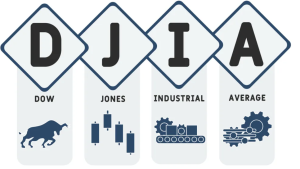Bitcoin, the world’s most popular cryptocurrency, has been on a remarkable journey since its inception. With its surging popularity, more investors are exploring ways to incorporate Bitcoin into their retirement savings. One avenue that has recently gained attention is the inclusion of Bitcoin in 401(k) plans. In this article, we’ll explore the advantages and drawbacks of adding Bitcoin to your retirement portfolio.
The Case for Including Bitcoin:
Diversification: Bitcoin, often referred to as “digital gold,” is sometimes viewed as a potential hedge against traditional asset classes. By adding Bitcoin to your 401(k), you introduce a level of diversification that may help mitigate risk in your overall portfolio.
Potential for Growth: Bitcoin’s historical performance has been impressive, with significant price appreciation over the years. Those who believe in the long-term potential of Bitcoin see an opportunity for their retirement savings to grow more rapidly than traditional investments.
Institutional Adoption: The increasing acceptance of Bitcoin by institutional investors and corporations lends credibility to its place in traditional investment portfolios.
Hedge Against Inflation: With growing concerns about inflation, some investors view Bitcoin as a store of value similar to gold, which may retain its purchasing power over time.
The Drawbacks of Including Bitcoin:
Volatility: Bitcoin is notoriously volatile. Its price can fluctuate dramatically over short periods. This volatility can be unsettling for investors who are used to the stability of traditional retirement investments.
Lack of Regulation: The regulatory landscape for cryptocurrencies is still evolving. This uncertainty can lead to compliance and custody issues in traditional retirement accounts.
Complexity: Managing a Bitcoin investment requires a certain level of technical proficiency and understanding of the cryptocurrency space. This complexity might deter many traditional investors.
Security Concerns: Holding Bitcoin in a retirement account may require advanced security measures to safeguard your investment from potential hacks or theft.
Considerations Before Adding Bitcoin to Your 401(k):
Risk Tolerance: Assess your risk tolerance and your capacity to withstand the price swings associated with Bitcoin. It may not be suitable for risk-averse investors.
Regulatory Landscape: Stay informed about the regulations governing Bitcoin in retirement accounts, which can vary by country and region. Consult with a financial advisor to ensure compliance.
Custody and Security: Choose a reputable custodian for your Bitcoin holdings. Ensuring the security of your investment is paramount.
Portfolio Allocation: Consider what percentage of your 401(k) you want to allocate to Bitcoin. Experts often recommend a small percentage, typically no more than 5% of your total portfolio.
Long-Term Perspective: Approach Bitcoin as a long-term investment. While its price can be volatile in the short term, some investors view it as a store of value with the potential for substantial long-term growth.
Adding Bitcoin to your 401(k) is a decision that should be made after careful consideration and consultation with a financial advisor. While Bitcoin offers diversification and growth potential, it also comes with volatility, regulatory hurdles, and security concerns. The right choice for you depends on your risk tolerance, investment goals, and understanding of the cryptocurrency market. If you’re intrigued by the idea of Bitcoin in your 401(k), approach it with a well-thought-out strategy to ensure that your retirement savings are effectively diversified and protected.



























